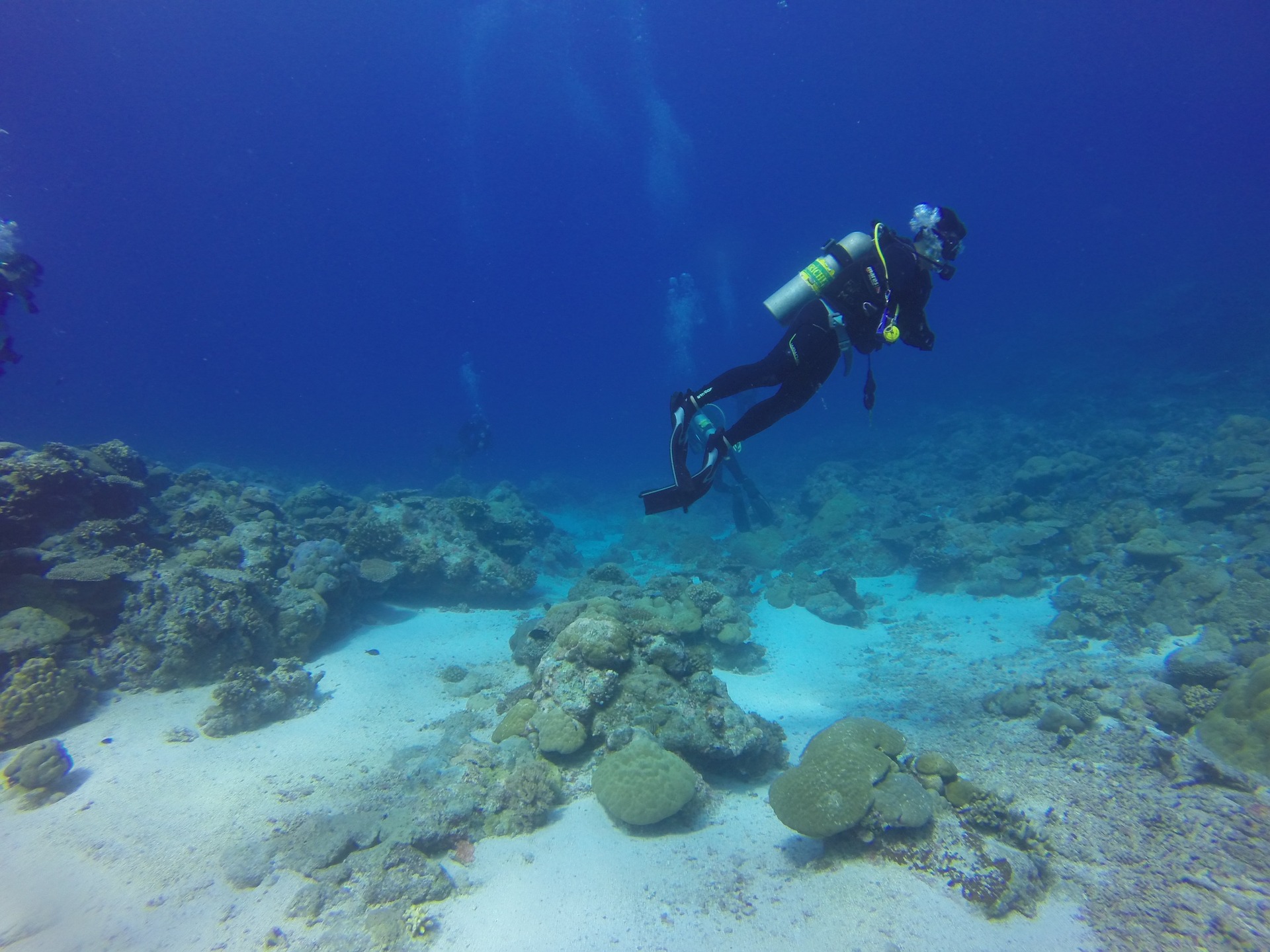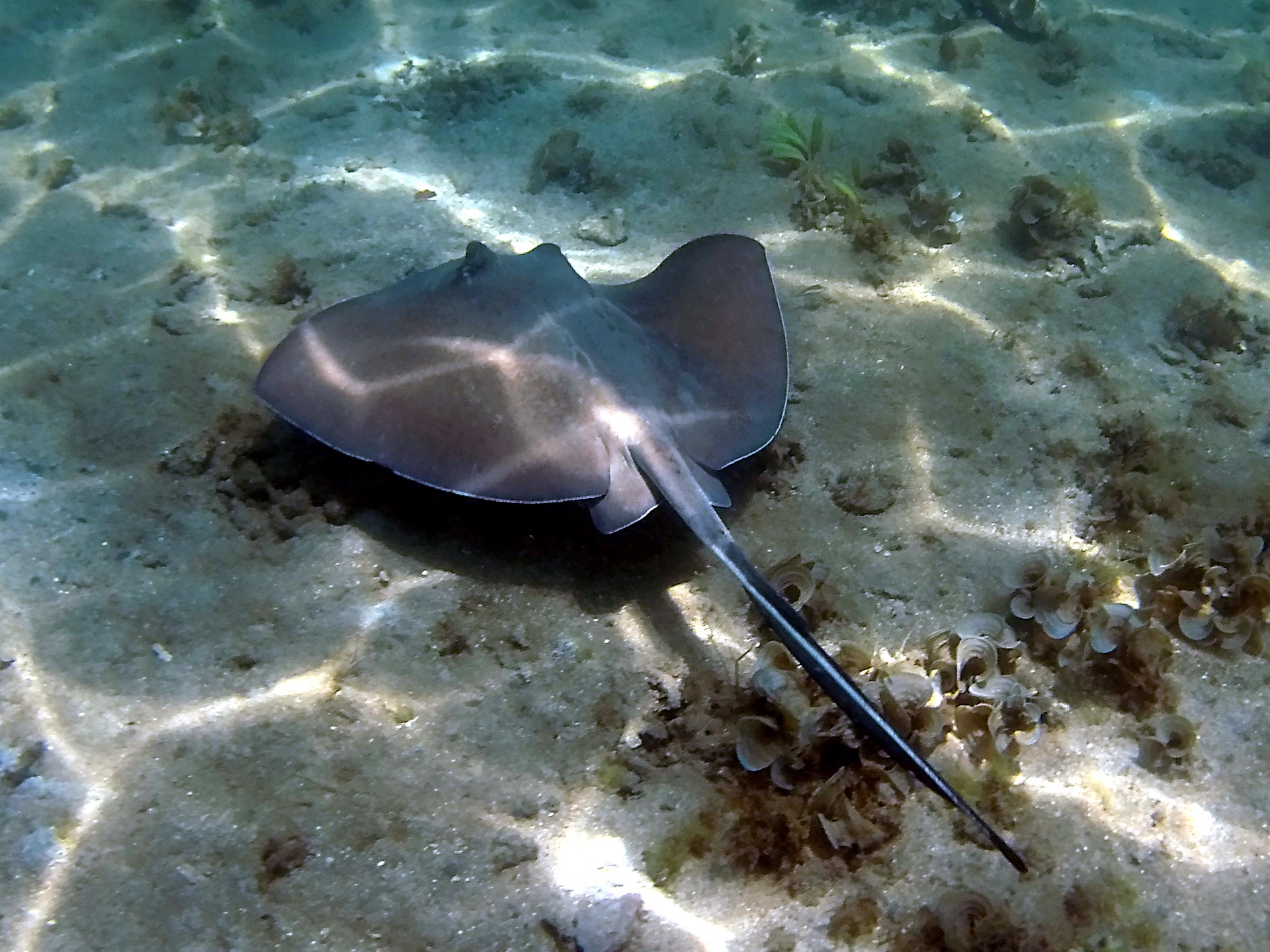Every year, divers from around the world make their pilgrimage to Costa Rica's Catalinas Islands – a haven for a spectacular variety of marine life, including giant manta rays with jaw-dropping wingspans up to 20 feet.
Indeed, the Catalina Islands are a special place. A sprinkling of 20 rocky islands, this scuba paradise invites divers and snorkelers to mask up, jump in, and break through the sparkling surface of an indigo Pacific. To dive into these warm and clear-watered depths, in search of devil manta rays, humpback whales, white-tipped reef sharks, angel fish, orcas, spinner dolphins, sea turtles, and so much more.
To discover "the Cats" and their incredible secrets. To explore one of Costa Rica's most sought-after dive sites. To experience just a hint of what lies beneath the surface of this eco-paradise. And, what lies above.

The great news is that you can visit the Catalinas Islands almost any day of the year: visibility is clear (20-75 feet or 6-23 meters) and the water is always warm (75-85º F or 24-29º C). Remember, this the tropics and here, the weather cooperates. Well, mostly. What you should know is that, while land and water temperatures / conditions are amenable to year-round exploration, and while marine life is happy to put on a year-round show, what does change are the currents. Depending on day-to-day conditions, the currents can kick up quite a fight. (We recommend this trip for advanced-certified divers.) Additionally, if spotting manta rays is high on your list, try to time your visit for November through May, when they're most common and visibility is best. Those numbers (and visibility) reach their true between January and March. Note that the best time for whale-watching (usually aboard the boat, on your way to/from the Catalina Islands) is between September and March.
We've already mentioned this a few times, but here's our official declaration: Costa Rica's Catalinas Islands are famous for their concentrated populations of massive manta rays – they can grow to almost 23 feet (7 meters) and weigh up to 3,000 pounds (1,400 kgs)! – as well as sting rays, devil rays, bullseye electric rays, spotted eagle rays, mobular rays, bat rays, and cow-nosed rays. In fact – and try to keep your cool (because it's so exciting!) – it's not uncommon to swim amongst schools of these graceful rays, as they explore the same undersea world that you do.
The Catalinas Islands: At a Glance
Location: 2 to 15 miles offshore (west) of Flamingo Altitude: Sea Level In addition to its neighbor, the Bat Islands (Las Islas Murciélagos), the Cats are considered one of the top scuba-diving spots in Costa Rica. We're talking warm waters that teem with life – life that easy to see, thanks to clear visibility up to 75 feet. And, since this scattering of 20 "islands" – some are more like rocks – are located directly off the shores of Tamarindo, we're perfectly located to all your underwater diving dreams. Indeed, whether you're a casual snorkelers or die-hard diver, if you're in Costa Rica, you cannot miss the Catalina Islands. But, you've already found your way to this article, so we're guessing you already know that. And with that, off we go. Here's everything you need to know about the Catalinas Islands.When to Visit

The great news is that you can visit the Catalinas Islands almost any day of the year: visibility is clear (20-75 feet or 6-23 meters) and the water is always warm (75-85º F or 24-29º C). Remember, this the tropics and here, the weather cooperates. Well, mostly. What you should know is that, while land and water temperatures / conditions are amenable to year-round exploration, and while marine life is happy to put on a year-round show, what does change are the currents. Depending on day-to-day conditions, the currents can kick up quite a fight. (We recommend this trip for advanced-certified divers.) Additionally, if spotting manta rays is high on your list, try to time your visit for November through May, when they're most common and visibility is best. Those numbers (and visibility) reach their true between January and March. Note that the best time for whale-watching (usually aboard the boat, on your way to/from the Catalina Islands) is between September and March.
Rays, Rays – Everywhere!

We've already mentioned this a few times, but here's our official declaration: Costa Rica's Catalinas Islands are famous for their concentrated populations of massive manta rays – they can grow to almost 23 feet (7 meters) and weigh up to 3,000 pounds (1,400 kgs)! – as well as sting rays, devil rays, bullseye electric rays, spotted eagle rays, mobular rays, bat rays, and cow-nosed rays. In fact – and try to keep your cool (because it's so exciting!) – it's not uncommon to swim amongst schools of these graceful rays, as they explore the same undersea world that you do.


